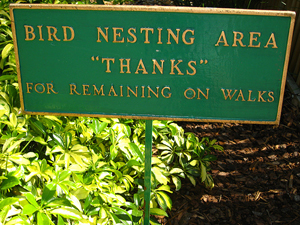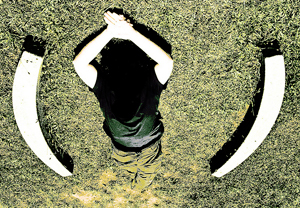
Source: 20090426 028_busch_gardens, RobandSheila, Flickr
Some punctuation marks come in pairs, such as quotation marks, parentheses, and brackets. Putting only half of these punctuation marks in a sentence will frustrate readers; they will always be waiting for closure, like waiting for the second shoe to drop.
Let’s discuss these pairs in order of how frequently they are used.
Quotation marks
These double squiggles enclose direct quotations, or what someone said or wrote word for word. Whether profound or funny, a direct quotation needs a pair of quotation marks.
Socrates said, “An unexamined life is not worth living.”
Steve Martin said, “A day without sunshine is like, you know, night.”
When you proofread, check that your periods are inside the quotation marks. If you are quoting someone, all of the quoted material will be inside the quotation marks. If the quotation is a complete sentence, the terminal punctuation will also be inside the quotation marks.
“Outside of a dog, a book is man’s best friend. Inside of a dog, it’s too dark to read.” —Groucho Marx

Source: Entre parenthesis, Faras dulce de leche, Flickr
Parentheses
Parentheses are curved brackets ( ) that look like the wrinkles you get from smiling. Parentheses are used to include extra or supplemental information (called parenthetical information) or to clarify meaning. Parentheses are used to de-emphasize material that doesn’t fit into the flow of a sentence.
- After they nominated Sheldon (instead of Leonard), they asked us all to vote.
- Sheldon didn’t want the nomination (or so he said); he just wanted to focus on scientific pursuits.
- Would you rather meet after The Big Bang Theory (if everyone else approves)?
Note that punctuation marks go outside the parentheses.

Source: Brackets Icon, Adobe, Wikimedia
Brackets
The third pair is brackets [ ]. This set of punctuation marks is used so seldom that you might have trouble finding them on your keyboard. Take a minute to locate the brackets on the two keys to the right of the letter “p.” Whereas parentheses are used to add supplemental material to all types of writing, brackets are used only within quoted material when another set of parentheses are needed to avoid confusion or to add clarification. See the following example quoted from the paragraph about Dorian Gray from the previous section. With the addition of the brackets, you are signifying that you have added the new information to add clarity for your readers.
"[Dorian Gray] was a character in a famous novel."
Semicolons and colons
The last two punctuation marks you will review are semicolons and colons. The semicolon, or literally half a colon (;), has gone in and out of fashion at different times. Even now, it’s not universally endorsed. Author Donald Barthelme wrote that it “was ugly, ugly as a tick on a dog’s belly.” Sometimes, however, a semicolon is the best choice for joining two independent clauses that are more or less equally important.
- You can go to the grocery store; I will go to the bakery.
Our discussion here is about semicolons joining two independent clauses. Like the semicolons used here, a colon must be preceded by an independent clause. Semicolons and colons share something else in common: Either one may or may not be followed by an independent clause.
- Jake owns several kinds of cattle: three tigerstripes, five angus, and 15 longhorns.
You’ll notice that the information after the colon further explains the information that appears before the colon. To see how much you know about the use of semicolons and colons, do the following activity. Click on one answer for each question.
